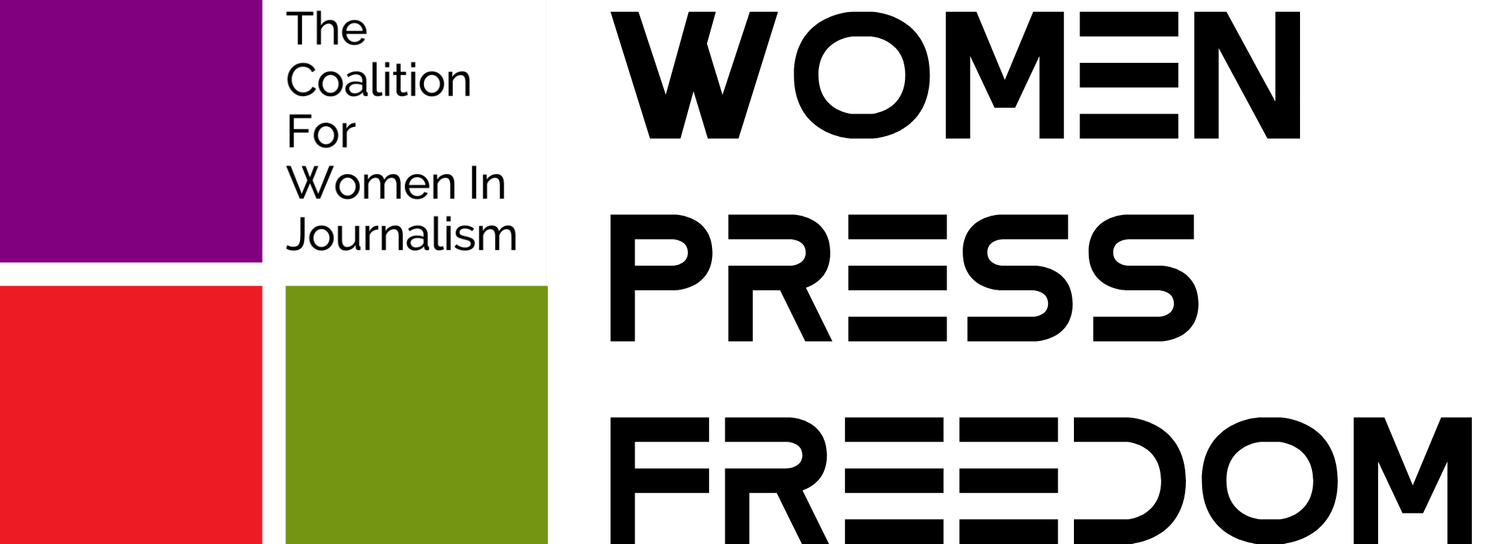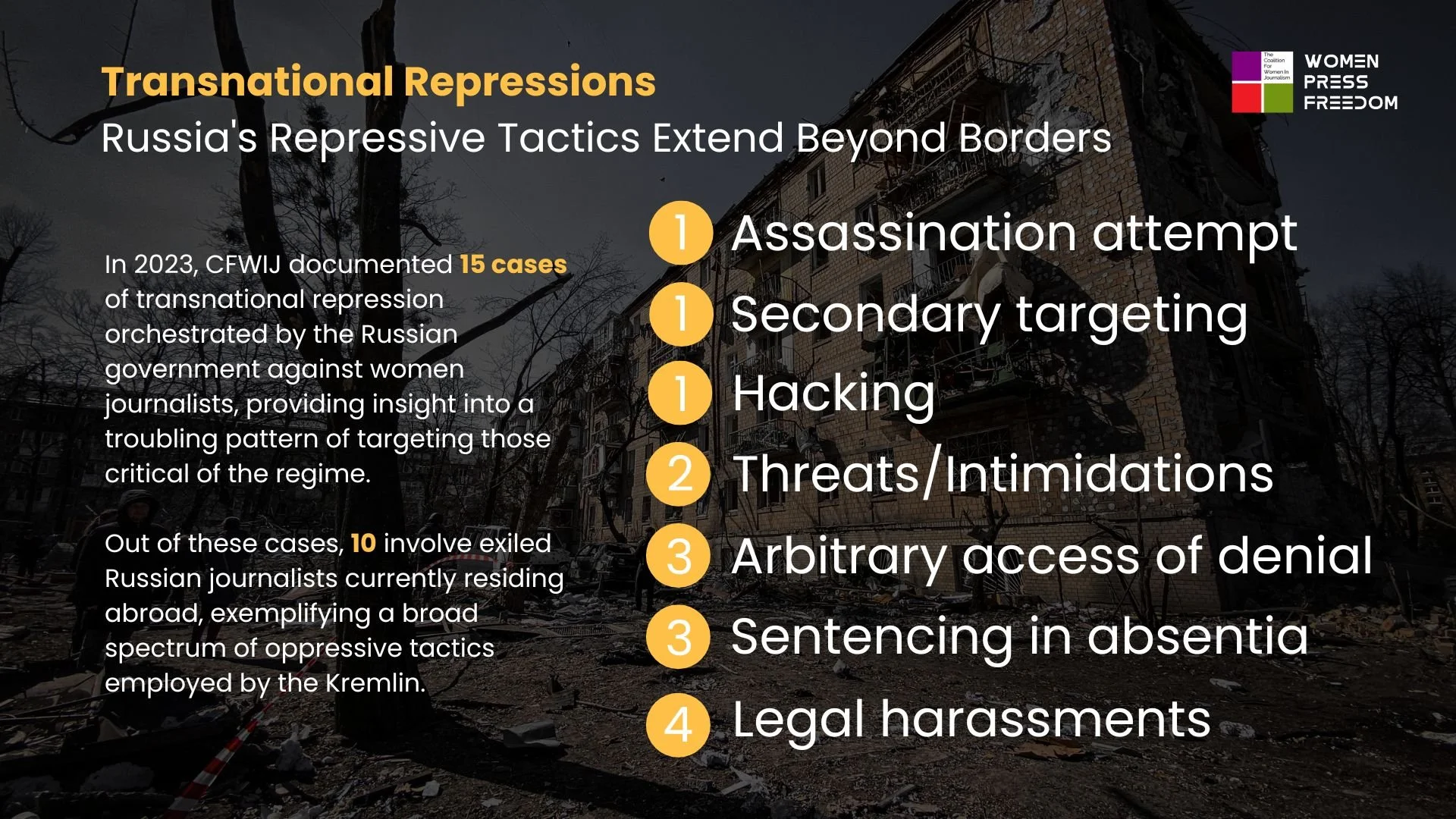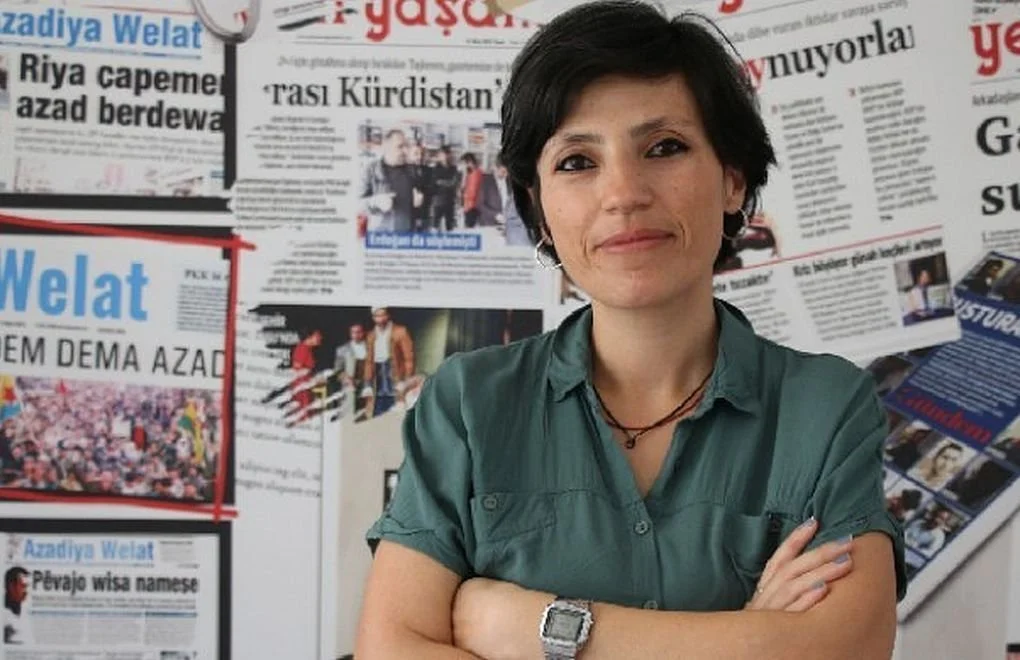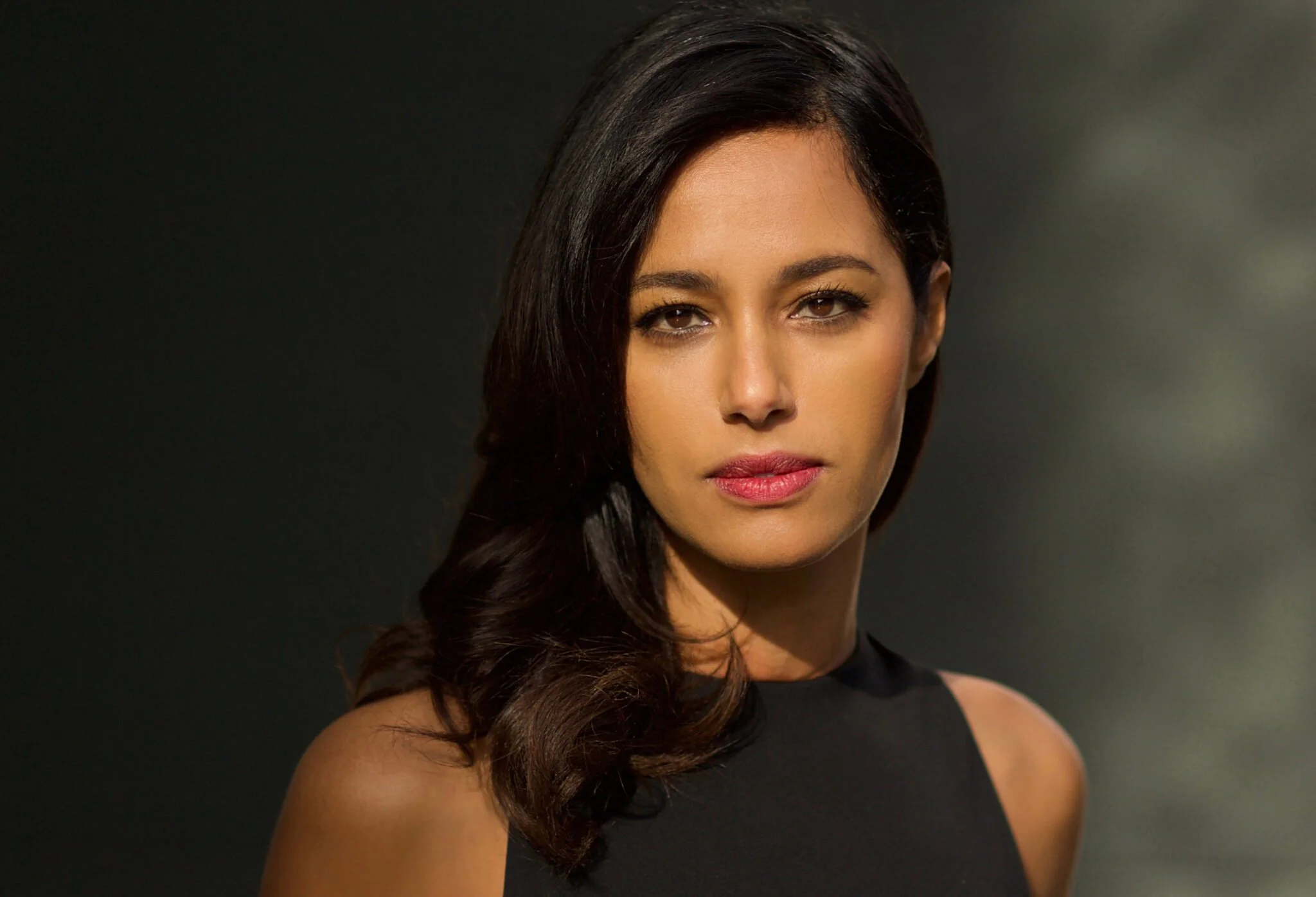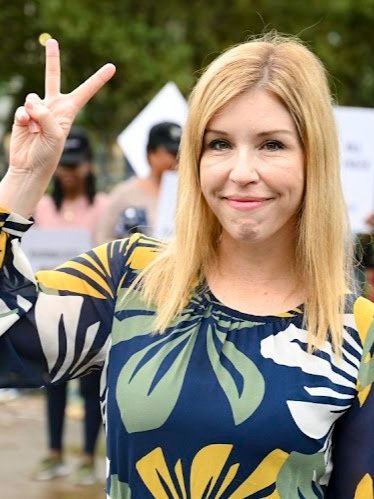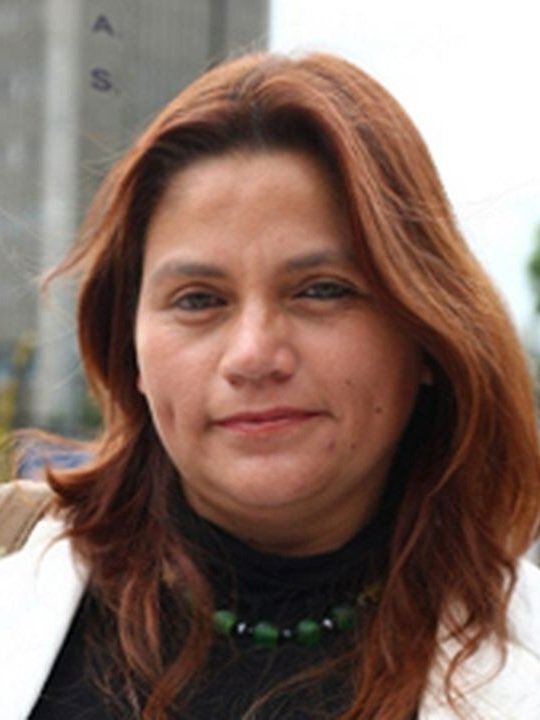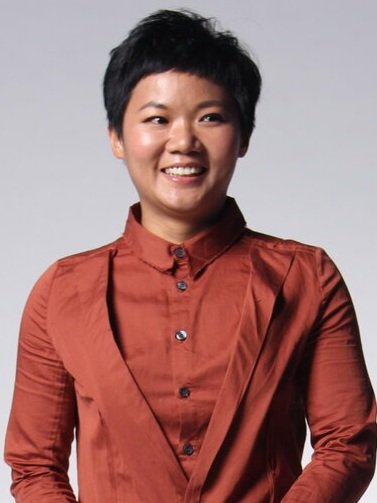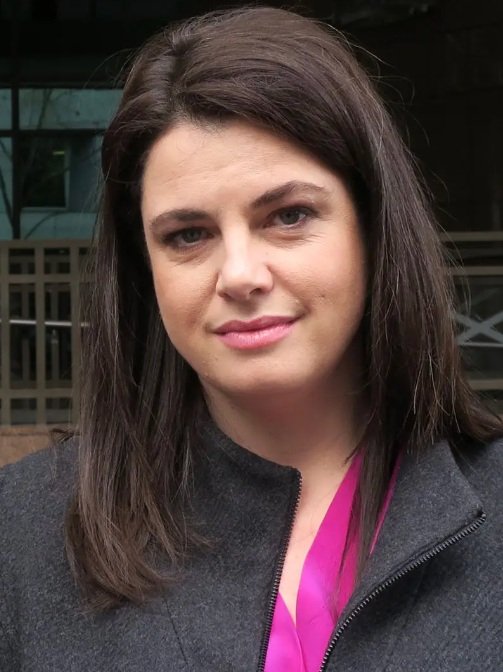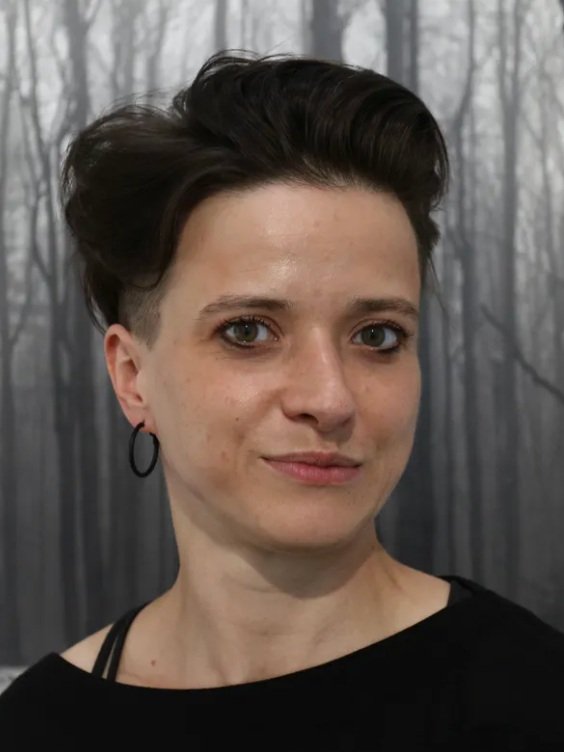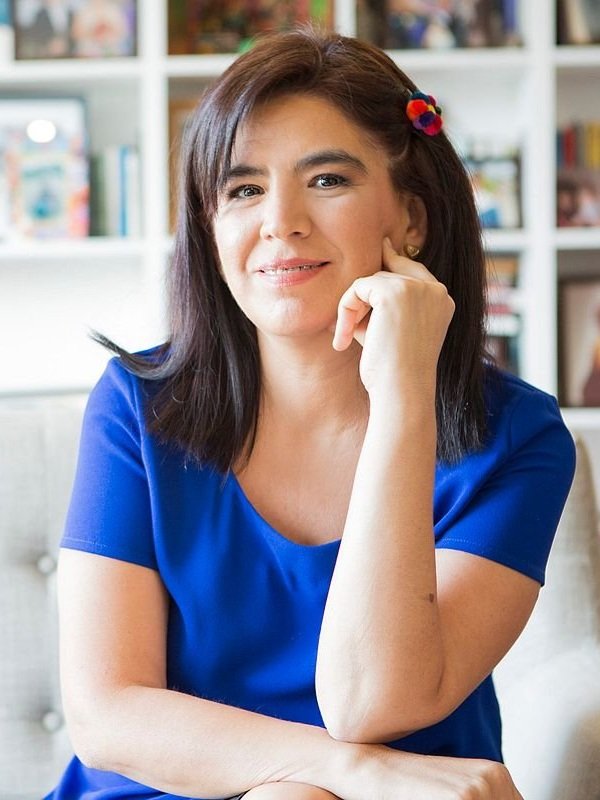2023 Annual Press Freedom Review
The Deadliest Year for Women in Journalism Amid Global Conflicts
-
Ideally, in a given year, we want to identify a key problem or trend, so we can direct our full energy on helping advocate for and improve that area of our work. But this has not been the case since we started doing this work in 2019.
We inherited a world where Donald Trump said hateful and harassing words to racialized women journalists, popularizing the public harassment of journalists and additionally so when they were women. Fast forward to 2023, we saw revolting smear campaigns against journalists, racial and gendered attacks on women journalists, an escalated trend of SLAPP cases, detentions, deportation, and police violence and censorship in nearly all major forms of violations have become consistent in politically and economically unstable world.
The ideology of one kind has become a nuisance for the other in our society, and we have recorded trends depicting both the political right and political left target journalists all over the world. In terms of press freedom, there is no country immune to regressive behavior. When it comes to press freedom attacks on women journalists, there is no first and third world, there is just one world from the East to the West where most governments do nothing for accountability when journalists get targeted unlawfully.
The threat to journalists does not only come from the police, legal abuse, or traditional means of censorship, but one earth-shattering threat is the gutting of the media. When more than 17,000 journalists get laid off in less than a year, which is what happened in 2023, it is not a financial or corporate matter at all. It is a press freedom matter. All of these layoffs are in the United States, Canada, the U.K., and Australia, some of the wealthiest countries in the world.
Democracy and accountability of institutions in the Western world cannot exist without journalists being free and plenty. In the absence of a strong sense of press freedom in a nation, we see a decline in social and political accountability, creating bigger problems such as the rise of dictatorships — something we have seen in Latin America, Turkey, Pakistan, and Egypt among others. With increased censorship on the one hand and decreased opportunity for journalists to serve local communities with insight and investigation on the other, what we are witnessing is Western countries risk press freedom, and in that, their own sense of freedom.
Speaking of freedom, which is often ensured by safety, one other major issue we have been caught up in at the CFWIJ is transnational repression. Exiled journalists who had to flee their countries to avoid imprisonment, torture, and murder, now living in Western countries face harassment, abuse, trolling, physical attacks in public, and threats to life.
Russia, being a leader in creative infiltration in Europe to target dissenting voices, has tried killing journalists critical of Putin or reporting on Ukraine. Other similar countries targeting their journalists abroad include Iran, China, Turkey, Egypt, Pakistan, and Saudi Arabia, all of whom have tried to silence reporting from abroad.
At CFWIJ, we have noted an increase in transnational repression cases, particularly present in host countries, including the U.K., the United States, Europe, Australia, and Canada. We have tried working with law enforcement and, in some countries policymakers and government officials as well as intelligence agencies, but it has been a disappointing experience that transnational repression is not taken seriously by most institutions. This must change and we are working on collaborating more with all sides to create an eco-system of support for exiled journalists.
Having stated all of the above, I have come to understand over the years that the real issue we encounter is a lack of responsibility and interest from society at large. The lack of any efforts to salvage a prestigious and necessary element of our democracies, a.k.a press freedom. I wish I could say journalism doesn't need saving, but if the last few years, including 2023, teach us anything, it is that journalism indeed needs saving. Both from the inside and outside.
In 2024, we will be formally channeling our work through the new initiative called Women Press Freedom. With this, we aim to evolve some of our advocacy and programming work that will try to tackle major impediments that women journalists encounter. Instead of reacting to the problems, we aim to learn to be proactive to the threat journalists face. In the meantime, we hope our Annual Press Freedom Report 2023 will help you understand the global landscape for press freedom and gender. I would invite anyone interested in this work to join us and support us in our mission to protect and advocate for women and non-binary journalists. With collaboration, the work becomes easier.
Yours,
Kiran Nazish
Founding Director, Coalition For Women In Journalism
-
We stand at a critical juncture in our mission to advocate for and protect journalists worldwide. Our 2023 Annual Report paints a distressingly vivid picture of the current state of journalism. This year has been identified as the deadliest for journalists, casting a spotlight on the heightened dangers they encounter, especially in conflict zones and under authoritarian regimes.
Our comprehensive documentation and analysis bring to light deeply troubling trends. We have observed an unprecedented rise in the number of journalists killed by Israel in Gaza. The rise of deepfakes depicting journalists and the expanding scope of transnational repression by authoritarian states are other alarming phenomena. Our report meticulously covers these issues, offering insights into the specific threats in countries such as Turkiye, Iran, and India.
We are acutely aware of the varying nature of the threats faced by journalists in different regions. From the lethal dangers in Israel-Gaza to the rise of U.S. courts restricting freedom of the press, our report systematically details these harsh realities. The individual stories of journalists from various regions are more than statistics; they represent the human cost of these threats and the extraordinary courage of those who continue to report in perilous situations.
Our report is not just a record of adversities; it also acknowledges the significant victories in the struggle for press freedom and against oppression. These successes, whether in legal battles or policy reforms, reflect the tenacity and resilience of the journalistic community. They are beacons of hope, indicating the potential for positive change even in the darkest of times.
Our 2023 Annual Report is more than a mere compilation of challenges and triumphs. It is a clarion call to the global community, urging a collective recognition of the pressing need to protect journalists and safeguard press freedom.
Throughout the report, you will find stories from women journalists who share their thoughts about press freedom attacks they have witnessed and endured. Their voices indicate the tendency in the macrocosm of press freedom and democracy.
We at CFWIJ and Women Press Freedom remain committed to this cause, advocating tirelessly for those who dare to speak truth to power, often at great personal risk.
Inge Snip,
Senior Editor
Women Press Freedom
Threats across the years: 2021 - 2023
The Journalists We Lost in 2023
Transnational Repression
Authoritarian Regimes' Expanding Reach Against Exiled Journalists
Transnational repression, the act of authoritarian regimes targeting journalists beyond their borders, is a growing concern in 2023. Our latest data highlights instances of this phenomenon impacting women journalists worldwide, revealing the hurdles faced by those critical of authoritarian regimes. Russia stands out as the primary perpetrator of cross-border attacks against women journalists, followed by Iran and China. These governments exhibit a blatant disregard for press freedom, exerting severe pressure on independent journalism in their own countries. The increasing frequency of cross-border attacks underscores that their suppression of media no longer remains confined within their borders; instead, they actively seek to silence dissenting voices globally.
Russia's Repressive Tactics Extend Beyond Borders:
Exiled Russian journalists Elena Kostyuchenko, Irina Babloyan, and Natalia Arno, revealed that they had been poisoned
Among the targeted exiles, instances include an assassination attempt, alarming threats against two journalists in Czechia, multiple cases of legal persecution resulting in sentencing in absentia, and the inclusion of exiled Russians in terror lists. These tactics underscore the Russian government's concerted efforts to silence dissent, control information, and extend its influence.
The transnational repression extends beyond Russian citizens, encompassing two Ukrainian journalists targeted by the Kremlin. This shows the reach of Russia's repressive measures against those critical of its policies, regardless of nationality. Our data also reveals three cases involving British journalists who have been added to Russia's blacklists, barring them from entering the country due to their critical reporting. This arbitrary denial of access underscores the broader strategy employed by the Russian government to restrict the movement of journalists who challenge its narrative.
Iranian and Chinese Regimes Target Journalists Abroad:
In February, Iran International TV relocated from London to Washington DC due to serious death threats. Later in the year ITV News revealed that Iran International journalists Sima Sabet and Fardad Farahzad were the targets of a failed assassination attempt in 2022 orchestrated by Iranian spies. In May, Shima Shahrabi, an Iranwire journalist in the US, experienced secondary targeting by Iranian authorities, resulting in the arrest of her brother and the raiding of her parent's home. This incident starkly illustrates the authoritarian tactic of targeting the families of journalists abroad to silence them.
March saw exiled Chinese journalist Su Yutong facing escalated threats and blackmail while covering a Hong Kong protest in Germany. Yutong, who fled China in 2010, now lives in exile in Germany. Despite her new location, she has become a target of abuse, facing stalking, blackmail, threats, and attempted hacking of her social media and bank accounts. Transnational repression is also evident in the targeted harassment of Marije Vlaskamp, a De Volkskrant reporter and former China correspondent. Vlaskamp, who left China in 2019 and currently resides in the Netherlands, faced threats originating from China. Bomb threats were made in her name to Chinese embassies in The Hague and Oslo. Prior to this, she had been pressured online to retract a critical article about China.
The cases of transnational repression perpetrated against women journalists depict a multifaceted and alarming trend. The diverse array of tactics employed, from assassination attempts to threats and inclusion in terror lists, demonstrates the severity of the measures taken to stifle dissent. Exile, traditionally seen as a safe haven for journalists escaping persecution, becomes compromised when authoritarian governments extend their repressive tactics beyond borders. Western democracies, key destinations for exiled journalists, share the responsibility of defending those who speak truth to power. Governments hosting exiled journalists must swiftly and concretely act to protect those facing transnational repression within their borders. Cases involving threats, harassment, or surveillance require prompt investigation, with law enforcement adequately informed and equipped to address the growing complexity of dangerous acts from foreign regimes.
Allowing autocrats to silence journalists without consequences jeopardizes democracies worldwide.
Voice of a journalist injured on the job, then faced years of discrimination due to injury. Almost a decade later, she sued the employer to raise her voice.
-
2023 was a significant year for me and for the industry as my case for disability discrimination and unfair dismissal finally had its first hearing at the UK employment tribunal — almost a decade after I was injured in the field. Newsrooms and media companies have been quick to claim how “diverse” they are, but this must go further than visible change. Policies for injured journalists need addressing.
I was injured while on assignment for CNN in Jerusalem in 2014. My cameraman drove over my foot in a two-ton vehicle. Almost a decade on, I live with the consequences on a daily basis. I have ligament laxity, damaged tendons, crushed nerves — and so I live with a neuropathic pain condition.
I have what I subsequently learned is called an invisible disability.
My case is finally being heard and I decided to ‘go public’ in 2023. The response and support from journalists who’ve also experienced discrimination but chosen not to go public has been uplifting and depressing.
Journalists who work in the field and the large teams around them take significant risks.
We do this on the tacit understanding that our companies will support us and ensure we are taken care of should we be injured or killed in the field. We shouldn’t need to go to court.
After the Iraq war, ironically, it was Chris Kramer of CNN who made the first rallying call for the protection of journalists, and so the hostile environment, aka HEFAT courses, were born.
But what about those of us who aren’t killed but are injured?
There needs to be a transparent policy that applies to all staff who work in the field.
“Newsrooms and media companies have been quick to claim how “diverse” they are, but this must go further than visible change. Policies for injured journalists need addressing.”
Liberty or Liability? The Alarming Legal Assault on Journalism in the United States
Recent developments in the United States concerning arrests, raids, and court orders against journalists highlight an alarming trend of increasing press freedom violations. The escalating conflict between press freedom and court orders in the United States has emerged as a significant concern, especially highlighted by recent rulings that have compelled journalists to reveal confidential information and sources.
CFWIJ has documented courts compelling journalists like Ishani Desai and Catherine Herridge to reveal confidential information and sources. In New Hampshire, Lauren Chooljian's compelled surrender of unpublished materials in a libel case adds to the growing concern about the use of libel lawsuits as a tool to intimidate journalists and stifle public debate. These rulings not only challenge the protections afforded under the First Amendment and respective state shield laws but also set dangerous precedents for future press freedom. The case of Priscilla Grim in Atlanta, facing disproportionate RICO and terror charges for her role in a protest, further underscores the misuse of legal frameworks to stifle the free press.
These cases collectively signal a worrying shift in the legal landscape, undermining the essential role of a free and independent press in a democratic society.
Arrests and raids on journalists, as seen in the cases in Kansas with Magistrate Laura Viar, Alisa Reznick in Arizona, and the Atmore News team in Alabama, paint a grim picture of the current state of press freedom. These incidents not only represent individual struggles but also reflect a broader assault on press freedom.
In Kansas, court dismisses a misconduct complaint against Magistrate Laura Viar. The complaint was related to a controversial search warrant issued against the Marion County Record, in violation of federal laws protecting journalists from such raids.
It emphasizes the urgent need for legal safeguards, like the enactment of a federal shield law, to protect journalists against such intrusive demands.
Behind Bars for Reporting on the Truth: 116 Women Journalists in 2023
As 2023 drew to a close, the chilling number of 116 women journalists incarcerated globally stands as a sobering testament to the perils faced by those in pursuit of truth. The Coalition For Women In Journalism (CFWIJ) and Women Press Freedom's data presents a grim picture: a marginal decrease in detentions but a precipitous drop in releases, underscoring the increasing risks for female journalists, particularly in countries like Iran, Belarus, and Turkiye.
The year saw 36 new detentions, a slight decrease from previous years, but alarmingly, only 6 journalists were released. This represents a 17% release rate, a stark contrast to the 83% who remain imprisoned.
Kurdish journalist Nazila Maroofian
Iran: A Hotbed of Repression
Iran's landscape for journalists is fraught with intimidation, harassment, and arbitrary arrests. The regime's heavy-handed approach stifles press freedom, creating a climate of fear and self-censorship.
Notable cases include Nasim Sultan Beygi, arrested at Tehran's airport and later sentenced to over four years in prison for charges including "propaganda against the system." Similarly, Saeedeh Shafiei faced charges resulting in the same sentence length. Their ordeals reflect Iran's broader crackdown on media personnel, often accused of spreading state propaganda or threatening national security.
Nazila Maroofian, a Kurdish journalist, exemplifies the regime's relentless pursuit of dissenting voices. Following her coverage of Mahsa Amini's death, Maroofian faced multiple arrests and detentions, culminating in a sentence for "propaganda against the system" and "spreading false news."
Journalists Maryna Zolatava and Lyudmila Chekina
Photo credit: sb.by
Belarus: An Unchanging Landscape of Suppression
In Belarus, the situation for journalists remains grim and static. The government's fear of a free press is evident in the harsh sentencing of Maryna Zolatava and Lyudmila Chekina to 12 years in prison, a stark indicator of President Lukashenko's authoritarian regime. This crackdown extends to other journalists, like Yulia Dauletava and Liudmila Andzenka of Ranak TV, arrested under charges of "assistance to extremist activity.
Journalist Dicle Müftüoğlu
Turkiye: A Shift in the Narrative
While Turkiye saw a 60% reduction in detentions of women journalists in 2023, the release rate plummeted dramatically, with only one journalist freed. This shift indicates a growing reluctance to release detained journalists, signifying a troubling trend in the country's approach to press freedom.
During the presidential elections held in May of 2023, authorities in Turkiye seemingly eased their crackdown on the free press in an attempt to garner support from the public. However, it is deeply concerning that the systematic targeting of Kurdish women journalists for simply carrying out their professional duties continues unabated. Shockingly, statistics reveal that since 2020, approximately 70% of women journalists imprisoned in Turkiye are of Kurdish descent. This alarming trend highlights the ongoing challenges faced by Kurdish women journalists in the country.
Turkiye Remains Top Country for Violations Despite Decline
CFWIJ data indicates a significant drop in violations against women journalists in Turkiye during 2023 compared to previous years. In 2023, the total number of violations stands at 84, marking a noteworthy decrease from 151 violations in 2022 and 238 violations in 2021. This decrease, while a positive development, does not diminish the severity of the remaining challenges faced by women journalists in Turkiye.
The top violations for 2023 encompass a range of alarming categories, with detentions leading at 34.5% of the total, followed by legal harassment (23.8%) and physical assaults (14.3%). Women journalists in Turkiye, particularly those of Kurdish descent, continue to be harassed, detained, imprisoned and persecuted at a concerning rate.
Kurdish Journalists Persistently Targeted:
Media outlets and journalists serving the Kurdish population in Turkiye grapple with historical restrictions and discrimination, facing relentless persecution and limitations. In 2023, this targeting persisted, with Kurdish women journalists unjustly charged with terrorism offenses, enduring detentions, and even imprisonment. State authorities systematically target Kurdish journalists, baselessly linking them to designated terrorist organization PKK, particularly when reporting on their community or using the Kurdish language.
Renowned journalist Dicle Müftüoğlu, affiliated with a Kurdish outlet, was arrested on Press Freedom Day, May 3, 2023, and remains in detention. As the co-chair of the Dicle Fırat Journalists Association, a local media advocacy group, Müftüoğlu is a dedicated journalist who has actively advocated for imprisoned journalists in Turkey, especially those of Kurdish descent. She has faced repeated legal harassment and detentions in the course of her work.
In April, 17 Kurdish journalists were charged with membership in a terrorist organization, with most released on bail pending trial. In November, Dilşah Kocakaya began a 15-month prison sentence for her 2016 work with a now-shuttered Kurdish site. The blatant targeting of the Kurdish press is often justified as an anti-terrorism measure by the state. However, the reality is that these outlets and journalists are being penalized for their commitment to working with Kurdish language media that addresses issues relevant to their communities.
Detentions Used to Punish and Intimidate:
Detentions are a significant concern, constituting 34.5% (29 cases) of total violations in Turkiye. Many incidents occurred during protests, while others targeted journalists for their published work and social media posts. Prior to April elections, 7 women journalists covering a protest in Istanbul were violently detained by the police. In October, following a bombing in Ankara, at least six women journalists were detained in nationwide police raids, primarily targeting leftist and Kurdish news outlets under the guise of anti-terrorism operations. In July, journalists Sibel Yükler, Evrim Deniz, and Evrim Kepenek were detained for allegedly retweeting news about a prosecutor's reassignment. The fear of detention and legal persecution has a chilling effect, leading to self-censorship among journalists, impacting their ability to investigate, report on, or express opinions about sensitive topics. These detentions not only violate those detained but also contribute to a wider atmosphere of media self-censorship.
Violence Against Journalists from the Public and Police:
In 2023, CFWIJ documented 12 cases of physical assaults against women journalists in Turkey. Many incidents, particularly after February's earthquakes, were carried out by members of the public. Journalist Arzu Efeoğlu and her team faced citizen aggression in Gaziantep, where people attempted to attack them and demanded their ID cards. Fox TV reporters Sevgi Şahin and camera operator Ömür Dikme were attacked by locals during a live broadcast. In Malatya, a group tried to assault ArtıGerçek reporter Yağmur Kaya. The hostile environment for journalists reporting on the ground is exacerbated by anti-press rhetoric and the demonization of journalists by Turkish politicians. Additionally, several assaults involved aggression from the police, including reporter Eylem Nazlier's hospitalization due to injuries sustained in April. Journalists covering the Saturday Mothers protests in Istanbul in July were also physically assaulted and mistreated by police officers.
Legal Instruments Wielded as Weapons Against Press:
Legal harassment, encompassing 20 cases, reveals a well-known assumption among Turkish journalists; if they dare to report, they will end up in court. The state, its institutions, and employees in Turkiye are persistently targeting critical journalists with nuisance lawsuits. In 2023, CFWIJ documented cases of journalists being sued for reporting on rape, child abuse in care homes and even for sharing or retweeting social media posts. This tactic is employed to drain targeted journalists of time and energy and deter others from reporting critically. The misuse of legal mechanisms to curtail journalistic freedom, whether through baseless lawsuits or prolonged legal battles, signifies a targeted effort to discourage women journalists from pursuing their work.
Russia: Europe’s Top Violator, Attacking Journalists at Home and Abroad
Impunity for those who beat journalists, absurd sentences for “discrediting” the army, and sinister attacks on exiled reporters — in 2023, Russia showed the world its contempt for independent journalism and its continued resolve to crack down on those who dare to challenge it, both at home and abroad.
CFWIJ’s 2023 data exposes a surge in press freedom violations in Russia, from 35 cases in 2022 to 52 in 2023. Urgent attention and action are warranted to address the Russian government's severe encroachments on press freedom.
Impunity for Crimes Against Journalists:
The Russian state's continued leniency towards those violently assaulting journalists underscores its disdain for press freedom. President Putin's pardon of Sergei Khadzhikurbanov, implicated in the 2006 assassination of journalist Anna Politkovskaya, exemplifies this disregard. Violent attacks in the North Caucasus on Novaya Gazeta’s Elena Milashina and journalists Lilian Rubtsova and Alena Sadovskaya, with no charges brought against the assailants, further highlight the grim situation. The pattern of impunity for attacks on journalists continues.
Targeting Journalists With Military Censorship Laws
Legal harassment emerges as a prevalent violation, with documented cases doubling in 2023, affecting 10 women journalists. Russia is using military censorship laws, enacted after its 2022 invasion of Ukraine, to intimidate and imprison journalists. The Kremlin's targeted efforts to harass exiled journalists critical of Russia's actions in Ukraine are evident through inclusion in extremist lists and charging in absentia. These tactics not only limit journalists' ability to connect with their families but also aim to curtail their freedom abroad.
Targeting Journalists in Conflict Zones:
Russia's armed forces continue to harm journalists reporting from the frontlines in Ukraine. Russian shelling of Pizza RIA in Kramatorsk resulted in the death of Ukrainian writer Victoria Amelina, as well as injuries to journalists Anastasia Taylor-Lind and Catalina Gómez. The illegal detention of Iryna Levchenko and the alarming disappearance of Ukrainian journalist Victoria Roshchyna in occupied territories in eastern Ukraine raise deep concerns about the safety of journalists reporting on Russia's invasion.
Restricting and Intimidating Foreign Press:
In 2023, Russia showed the world that its tactics of repression were not just employed to silence its own citizens but that it was more than happy to weaponize legal instruments to detain and obstruct foreign correspondents too. Eight months after the Kremlin detained Wall Street Journal’s Evan Gershkovich, revered RFE/RL editor and U.S. citizen, Alsu Kurmasheva was detained. The journalist is still behind bars and continues to face escalating charges that threaten to keep her in prison for over a decade. Fear of detention, inclusion on Russia’s blacklist and the denial of visa renewals for foreign journalists hinder international reporting in Russia, granting the Kremlin tighter control over the media narrative
Alsu Kurmasheva, a distinguished Russian-American journalist and editor at Radio Free Europe/Radio Liberty, has been unfairly detained by Russian authorities since October 18, 2023. Residing in the Czech Republic, Kurmasheva was visiting Kazan, Russia for a family emergency when she was targeted by authorities. Holding both U.S. and Russian citizenship, she faces serious charges, risking over a decade in prison.
Known for her commitment to reporting on cultural and human rights issues, especially concerning ethnic minorities in Russia, Kurmasheva's arrest is a targeted assault on journalistic freedom. As an American, Kurmasheva deserves the full support of the U.S. government and the U.S. Embassy in Moscow.
Prison Mistreatment of Journalists:
The mistreatment of imprisoned journalists, exemplified by the case of Maria Ponomarenko, reveals a troubling trend. Ponomarenko's solitary confinement for health-related issues and the subsequent investigation launched against her for allegedly attacking prison staff highlight the punitive measures faced by unjustly imprisoned journalists. Similarly, the deteriorating health conditions of Crimean journalist Iryna Danilovych, deported to a Russian prison colony this year and repeatedly denied medical care, underscore the harsh realities faced by women in custody in Russia, violating both human rights and journalistic freedom.
Voice of a veteran journalist who has seen the decline of press freedom and protections available to women journalists for decades in her country.
-
Being a journalist in Pakistan is hard enough, but being a woman journalist exposes one to a myriad of other problems and threats. The misogyny is almost systemic, as the reaching double figures a mere few years ago indicate. We have brave, committed women who - on the dint of their merit and commitment - have shattered the glass ceiling, but for the majority, the floor has been sticky, resulting in pay gaps, limited opportunities, unresolved mobility issues that box them in certain fields. The brave ones have had to push their way through but at the cost of being exposed to threats, online and in cyberspace, in a very vile manner, all while in the line of duty. However it is encouraging to see Collectives being formed and serving as a support group and male allies rallying together to push the boundaries for women journalists where they can work.
“Being a journalist in Pakistan is hard enough, but being a woman journalist exposes one to a myriad of other problems and threats. The misogyny is almost systemic, as the reaching double figures a mere few years ago indicate.”
Growing Crisis for Women Journalists in Modi's India
Nearly a decade into Prime Minister Narendra Modi's tenure, the world's largest democracy stands at a crossroads, with press freedom under siege and the voices of dissent being systematically stifled. Since May 2014, under the BJP's regime, India has witnessed a disturbing rise in attacks against journalists daring to question the governance. Narendra Modi, in his almost ten-year rule, has notably avoided direct interactions with the Indian press, a silence that speaks volumes in a country priding itself on democratic values.
In 2023, CFWIJ documented 17 major cases in India, marking an alarming escalation in attacks on press freedom and journalistic independence.
Following an accusation made by Bharatiya Janata Party (BJP) MP Nishikant Dubey during a parliamentary session, broadcasted on television, against NewsClick for allegedly receiving financial support from China to undermine India's reputation, journalist Swati Chaturvedi faced severe harassment and threats. Dubey implicated Chaturvedi in the purported scheme. Subsequently, her personal contact information was disseminated across public WhatsApp groups, leading to her and her parents receiving numerous rape and death threats through calls and messages. The harassment escalated to a tangible threat when a dead cat was left at her doorstep, indicating the severity of the threats had moved from the digital to the physical realm.
One month later, in October 2023, seven women journalists were targeted during a raid by the Delhi police on an independent outlet NewsClick in October 2023. The raid followed a New York Times exposé implying the newsroom had ties to China-aligned philanthropist Neville Roy Singham. Amidst an increased tightened grip on critical media, authorities exploited the findings as a guise for an anti-terrorism investigation into the outlet and its journalists.
Meanwhile, during the Manipur riots in September, police filed charges against Editors Guild of India members — which also included women journalists — over allegations of inciting unrest amidst ethnic violence. In August, Muslim journalist Khushboo Akhtar's family home in New Delhi was set on fire, leading to extensive damage, as the reporter said the attack was a deliberate attempt to silence her as someone who remains vocal about receiving threats for her work.
The reach of the BJP's influence extends beyond India's borders. American-Canadian TIME magazine journalist Astha Rajvanshi received incessant backlash followed by threats online after she interviewed Sikh leader Gurpatwant Singh Pannun, an open critic of the Modi government based in the US. Rajvanshi received threats from not only the supporters of BJP but also a defense analyst with ties to the government. When Wall Street Journal correspondent Sabrina Siddiqui broached the topic of religious discrimination in India, she faced a torrent of abuse and threats, highlighting the perils of challenging the status quo.
In previous years, journalists like Gauri Lankesh paid with their lives, leaving a legacy of unanswered justice. The spectrum of threats encompasses intimidation, legal harassment, sexual harassment, and targeted troll campaigns. Journalists like Rana Ayyub, who have delved into sensitive subjects like the Gujarat riots under Modi's past rule, continue to endure relentless abuse and threats.
In Kashmir, journalists are trapped in a web of occupation and repression. Instances like the barring of Pulitzer Prize-winning photojournalist Sanna Irshad Mattoo from international travel, and the detention of Fahad Shah under draconian laws, underscore the severity of the situation.
Journalists have told CFWIJ about self-censorship, while media outlets have cut down their reporting budgets for crucial stories that remain untold in the midst of a stifled and suppressed atmosphere. While smaller, independent outlets have pushed back against the suppression, they remain lacking when it comes to the reach and influence of larger media groups operating in the country, which in comparison, often willfully or forcefully toe the government’s line. This situation instigates broader challenges to free speech and dissent in the country.
For over five years now, the Coalition for Women in Journalism has documented the atrocities against women journalists in India, focusing on a myriad of threats and attacks that they have endured for doing their work. Most of these journalists were only shedding light on the atrocities they saw unfolding around them, which were found to either be linked with highlighting the Modi government’s shortfalls or interlinked with the right-wing ideals that have penetrated India at dangerous levels, leaving most of the country’s religious and ethnic minorities threatened and exposed to violence and disrespect.
The country, despite its tall claims of being a secular, democratic country, has remained a stifling chamber for journalists who are only trying to do their jobs of delivering honest and factual journalism. However, the threats multiply when directed at women journalists in India, as they are subjected to discriminatory violence and attacks based on their gender, which adds a layer of vulnerability to their already threatened existence.
Voice of a journalist who endured years long media propaganda, smear campaigns and international repression. She uses her voice to call for an end to smear campaigns.
-
After years of verbal intimidation, lawsuits, and smear campaigns where I was singled out amongst other publications and journalists, it's clear that the neo-fascist government is targeting me personally and is using the judiciary and control over the media to intimidate me and essentially get me out.
When you have powerful government ministers and parliamentarians against you in a country where hate crimes are skyrocketing, naturally, you do not feel safe.
I've been focusing on the work that we all need to do, we have so many crises around the world. One of the reasons I chose to speak up is I want people to know that if anything happens to me in Italy, the government caused it. I want the world to know now that this is not only about me, but this is about silencing any critical voice in Italy. In my case, three things have compounded, I'm a woman of color, I'm a muslim, and I'm an immigrant. I feel like they are making an example of me to silence other people. It's easier to target women of color who do not have an official association with the network.
This government wants international legitimacy, and I really think they don't want the world to understand the depth of their fascism, and they're hiding behind Italian language content. The work CFWIJ is doing is so critical because they've (the governments) been lobbying so many newspapers to report about them as a moderate, conservative government. I think organizations like CFWIJ can not only protect me by holding a mirror to what this government is doing, but also reflecting to the international community to avoid normalizing the operations of the government.
“One of the reasons I chose to speak up is I want people to know that if anything happens to me in Italy, the government caused it. I want the world to know now that this is not only about me, but this is about silencing any critical voice in Italy. In my case, three things have compounded, I’m a woman of color, I’m a muslim, and I’m an immigrant”
Triumphs of Justice: The Vindication of Women Journalists in 2023
Journalist Bao Choy wins court appeal in Hong Kong
In 2023, the world of journalism witnessed a series of remarkable legal victories for women journalists, demonstrating their resilience and commitment to press freedom. These victories, while varied in geography and context, share thematic connections that highlight the universal challenges and triumphs in journalism. The Coalition For Women In Journalism and Women Press Freedom has been at the forefront of these battles, advocating for justice and accountability.
These victories, while distinct in their legal and cultural contexts, collectively represent a broader movement for justice and press freedom. They not only signify personal triumphs for the women involved but also symbolize the collective struggle of journalists worldwide against forces of oppression and censorship.
The acquittals of Nobel Laureate Maria Ressa in the Philippines and Karyn Maughan’s victory in South Africa epitomize the struggle against political harassment and the suppression of press freedom. Ressa’s battle against charges perceived as politically motivated under Duterte’s administration and Maughan’s fight against former president Jacob Zuma's private prosecution underscores the journalists' unwavering commitment to democratic principles and free speech.
In Colombia, Claudia Julieta Duque’s case marked a significant moment in addressing gender-based violence, with the torture she faced being classified as a crime against humanity. Similarly, the arrest of a police officer in Kenya related to the assault of Angela Muiruri highlights the ongoing battle against abuse of power, emphasizing the need for legal redress in such instances.
The efforts of Louise Milligan in Australia and the acquittals of several Turkish journalists, including Canan Kaya, Semra Çelebi, and Pinar Gayip, reflect the challenges faced in protecting journalistic integrity and combating defamation. These cases illustrate the pressures journalists face from entities seeking to discredit their work and silence critical reporting.
The victories of Bao Choy in Hong Kong and Charlotte Grieve in Australia serve as powerful examples of the journalistic right to access and report information. Choy’s success in her appeal against a conviction for accessing vehicle registration records and Grieve’s protection of her confidential sources are pivotal in ensuring that journalists can continue to investigate and report without undue restrictions.
Josie Huang’s settlement with Los Angeles County and Agata Grzybowska’s acquittal in Poland highlights the importance of resilience against legal intimidation and the need to ensure journalists' safety. These cases emphasize the necessity for proper training and protocols to prevent wrongful arrests and mistreatment of journalists, especially during coverage of sensitive or volatile events.
Pamela Huerta Bustamante’s victory in Peru and Paola Ugaz’s exoneration highlight the fight against institutional reluctance and the promotion of transparency. Their cases underscore the importance of journalists' ability to access information and combat legal harassment in their pursuit of truth.
As we celebrate these legal victories, we must also recognize that the path to justice is ongoing. These cases are powerful reminders of the importance of standing up for the truth, the significance of relentless advocacy, and the necessity of legal and societal support in safeguarding the freedom of the press. They inspire hope and determination, showing that despite challenges, the pursuit of justice and the protection of press freedom are indeed achievable and essential for the betterment of journalism and democracy.
The groundbreaking lawsuit by Brittany Hailer against Allegheny County Jail's gag order policy is a critical development in this context. It challenges the increasing prevalence of gag orders, which have become a significant barrier to journalistic transparency and accountability, especially in public agencies.
Threats Ahead: Deepfakes
The latter end of 2023 brought into focus the escalating threat posed by AI deepfake technology to women journalists. The use of deepfake videos, incorporating manipulated audio and visuals, has become a tool for orchestrating disinformation campaigns against women journalists. As AI software becomes more accessible to the masses and technology improves, journalists are becoming more vulnerable to AI-manipulated content using their likeness to target their credibility and trustworthiness.
Since October 2023, CFWIJ has documented several cases of deepfakes targeting journalists in South Africa, the United States, Slovakia and Peru. There has been a global surge in deepfake videos targeting television anchors, with some aiming to promote crypto scams and others posing more malicious threats. Particularly troubling was the case of Monika Todova, a journalist from Slovakia. An audio manipulation of her voice claiming to be an interview between her and a politician was shared online, strategically timed during a voting moratorium prior to an election, when it was spread unchecked.
The Coalition For Women In Journalism and Women Press Freedom calls for online platforms to strengthen content moderation policies, enhance AI detection tools, and foster collaboration between journalists and tech companies as essential steps in safeguarding press freedom and preserving the integrity of journalism in the AI age. Failure to act may result in irreparable damage to the reputation and trustworthiness of women journalists, perpetuating a culture of misinformation that undermines the foundations of a free and informed society.
